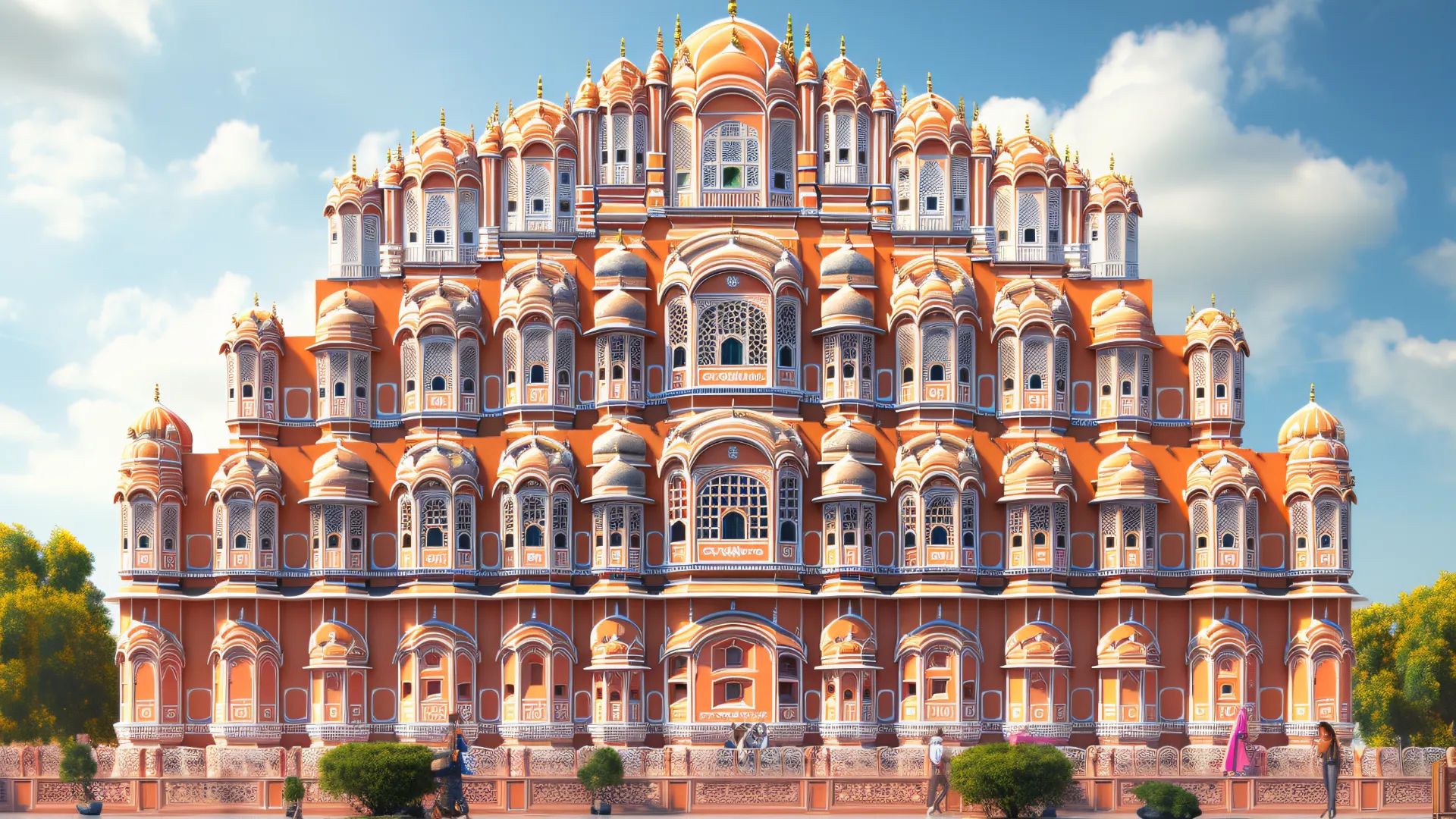Jaipur, famously known as the Pink City of India, is home to many architectural wonders, but none are as striking as the stunning Hawa Mahal. If you’re planning a visit to Hawa Mahal in Jaipur, this guide will provide insights into its fascinating history, the best spots for photography, and some hidden treasures that make this palace truly enchanting.
History of Hawa Mahal
In 1799, maharaja sawai pratap singh constructed Hawa mahal, it’s also known as the palace of winds. The talented architect Lal Chand Ustad designed this remarkable structure, which features five stories made of red and pink sandstone, beautifully merging Rajput and Mughal architectural styles. Its distinctive honeycomb structure includes 953 intricately carved windows (jharokhas) that promote natural airflow, ensuring comfort during the intense heat of Rajasthan’s summers.
Best Time to Visit Hawa Mahal
To make the most of your visit, consider the timing:
Early Morning: The best time to visit is at sunrise when the golden light highlights its stunning facade, creating perfect conditions for photography.
Evening: While entry is not allowed after sunset, the sight of the illuminated Hawa Mahal in Jaipur is truly captivating.
Weekdays: Visiting on a weekday morning can help you avoid large crowds, allowing for a more serene exploration.
How to Reach Hawa Mahal?
It is conveniently situated near Johari Bazaar and the City Palace, making it easy to reach:
By Air: Jaipur International Airport is located about 12 km away.
By Train: The closest railway station, Jaipur Junction, is roughly 5 km away.
By Road: Taxis, auto-rickshaws, and cycle rickshaws provide convenient transportation options to the monument.
Entry Fee and Timings
Timings: 9:00 AM – 5:00 PM (Open daily)
Entry Fee:
Indian Visitors: INR 50 per person
Foreign Visitors: INR 200 per person
Students: INR 25 per person (valid ID required)
Composite Ticket: This ticket allows access to multiple attractions, including Jantar Mantar, City Palace, and Nahargarh Fort.
What to Explore Inside Hawa Mahal?
It is not a separate palace but rather an extension of the City Palace. Inside, you can discover:
1. Exquisite Jharokhas (Windows)
The beautifully crafted 953 windows enhance airflow and provide stunning views of Jaipur’s lively streets.
2. Five Fascinating Floors
Each floor of Hawa Mahal in Jaipur has unique characteristics:
Sharad Mandir (1st Floor): Used for autumn celebrations.
Ratan Mandir (2nd Floor): Showcases vibrant stained glass.
Vichitra Mandir (3rd Floor): A meditation area for the Maharaja.
Prakash Mandir (4th Floor): Offers breathtaking views of the city.
Hawa Mandir (5th Floor): The highest level, providing a spectacular aerial view of Jaipur.
3. Museum Inside Hawa Mahal
A small museum features historical relics, artifacts, paintings, and sculptures, offering a deeper understanding of Rajasthan’s royal heritage.
4. Stunning Views from the Top
The topmost level offers magnificent views of landmarks such as the City Palace, Jantar Mantar, and Sireh Deori Bazaar.
Nearby Attractions
Make the most of your visit by checking out these nearby attractions:
City Palace (400m): The official residence of Jaipur’s Maharaja.
Jantar Mantar (500m): A UNESCO World Heritage site featuring an astronomical observatory.
Johari Bazaar (300m): Famous for its stunning jewelry and gemstones.
Bapu Bazaar (1km): A fantastic place to find traditional handicrafts and textiles from Jaipur.
Nahargarh Fort (6km): Perfect for enjoying breathtaking sunsets over the city.
Tips for Exploring Hawa Mahal
Arrive Early: Get ahead of the crowds and take advantage of the best lighting for photos.
Wear Comfortable Shoes: Be prepared for steep stairs inside the palace.
Hire a Guide: Learn more about the palace’s rich history and significance.
Best Photography Spot: For the most beautiful views, head to Tatou Coffee Café or Wind View Café.
Respect Heritage: Please refrain from touching fragile structures and keep the area clean.
Frequently Asked Questions (FAQs)
1. Why was Hawa Mahal built?
Hawa Mahal was constructed by Maharaja Sawai Pratap Singh in 1799 as an extension of the City Palace, allowing royal women to watch street celebrations without being seen.
2. Can visitors enter Hawa Mahal?
Yes, visitors can enter the palace through the rear entrance and explore its various levels, corridors, and museum.
3. How much time is needed to explore Hawa Mahal?
Typically, it takes about 1 to 2 hours to fully explore Hawa Mahal, depending on your interest in photography and history.
4. What’s the best transport option to reach Hawa Mahal?
Auto-rickshaws, cycle rickshaws, and taxis are the most convenient ways to get to Hawa Mahal. Public buses also have stops nearby.
5. Is Hawa Mahal illuminated at night?
Yes, It is beautifully lit in the evening, creating a stunning view. However, entry is not allowed after sunset.
